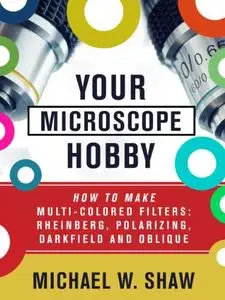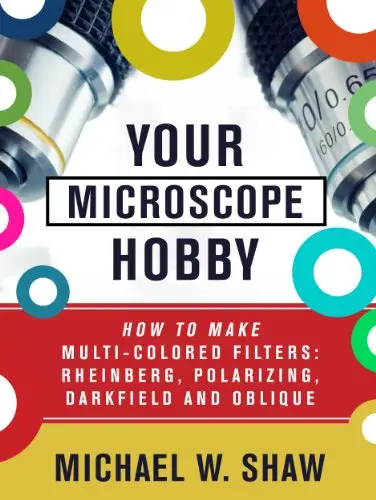Michael Shaw, "Your Microscope Hobby: How To Make Multi-colored Filters: Rheinberg, Polarizing, Darkfield and Oblique"
English | ISBN: 1511421479 | 2014 | EPUB | 255 pages | 10 MB
English | ISBN: 1511421479 | 2014 | EPUB | 255 pages | 10 MB
There are scant resources on the web and in books about making microscope filters, especially Rheinberg, Darkfield, and Oblique filters. How do they work? How do you make them? The author saves the reader the trouble of doing all the research by providing a step by step manual on microscope filter making.
For over a decade, the author has made microscope filters for universities around the world, for the Mayo Clinic, for professors, industrial scientists, hospital researchers, doctors and veterinarians on every continent, and for amateurs as well. In addition to the main topic of Rheinberg filters, covered are polarization and oblique filter making, which adds to the repertoire of microscope contrast techniques. The book also lists many resources for products and related references about microscopy.
Loaded with over 144 photos and illustrations, included are bonus chapters showing the reader how to make a microscope camera adapter, a nice wooden filter case, and instructions for making a plant press.
Having created sets of Rheinberg filters for various makes and models of microscopes, new, old, and antique, the author shares all of his techniques. Besides being a course on microscope filter making, the book provides the key elements to setting up a home based business via the internet, with a complete marketing plan that can be applied to other hobbies and interests as well.
REVIEWS>>>
“This book is just under 200 pages and evolved from a paperback Michael Shaw had written. As would be expected, much of the material from the paperback version had been carried over to the electronic version. However, the book has been revised and additional material added. For example, there is now a chapter on how to attach a digital camera to a microscope. As noted by the previous reviewers this is a how to book: it is a practical guide for making Rheinberg filters as well as providing some guidelines on making oblique illumination stops and using polarizing filters. So it would be incomplete to say that this book JUST covers making Rheinberg filter. It is more general and should provide a working guideline on how to increase contrast when viewing transparent specimens in a light microscope. The materials and methods are inexpensive and simple and will be of value to the hobbyist who enjoys viewing the micro world.
The book is not a theoretical analysis on microscope illumination strategies. Rather it is a guide book that encourages the microscopist to play with his microscope, enabling him to generate colorful images from specimens that are normally colorless. The book has color illustrations.
A quick note on reading the book. You do not need a Kindle. All you need is a smart phone or a computer or a tablet that can run the Kindle Reading Apps (the two I downloaded for my iPhone and Mac computer were free). So don't be put off from buying this book if you don't own a Kindle.
I recommend this book. It is an easy and fast read and provides numerous helpful suggestions and insights on working with a microscope.”
-Brian Matsumoto
“This book is unique in presenting a discussion on Rheinberg illumination with particular emphasis on how to MAKE a system for your microscope. It is well written and easy to read. The instructions are not only detailed and easy to follow but informative as well. It is everything you need to get into Rheinberg illumination for YOUR microscope (IMPORTANT: It is not microscope specific so will work with any system you have). Simply outstanding. He has summarized bits of information from many years of experimentation and research into how this method works.”
-Alex Cummins



